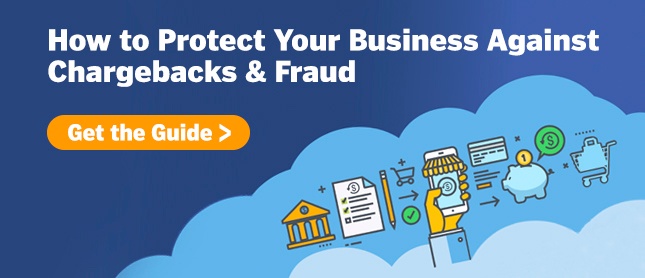
Gaming and Chargeback Fraud
By Chris Alarie on Jan 28, 2021
The video game industry is not big, it’s large. In fact, it’s massive. According to Fox Business, the industry’s revenue is expected to have increased by 20% in 2020 to a total of $180 billion, exceeding the pre-pandemic revenue of the sports and movie industries combined. But success breeds challenges.
Among the most severe problems stemming from the video game industry’s success is the prevalence of chargebacks. These chargebacks arise from a number of sources, but of particular interest are the three categories of fraud: friendly fraud, chargeback fraud, and true fraud. This article will examine why the video game industry is prone to these forms of fraud, how that leads to chargebacks, and an essential tool to help game developers reduce their susceptibility to chargebacks.
Friendly Fraud
As defined in our Payments Industry Glossary, friendly fraud occurs “when a customer requests a chargeback for a relatively innocuous reason, such as a family member making a purchase without the customer realizing, the customer genuinely forgetting that they had made a purchase, or some mistake relating to the customer not understanding something such as a return policy.” Mobile games, in particular, are susceptible to friendly fraud.
Mobile games often follow a freemium model involving micro-transactions in the form of in-app purchases. Purchasable items and boosts, unlockable elements, and ad walls that can be eliminated for a fee are all essential sources of revenue for many mobile games. However, these can also present multiple opportunities for friendly fraud.
For example, a child could be playing a game with their parents phone (or on their own phone that is associated with the parent’s payment information) and make some in-app purchases. Upon receiving their billing statement, the parent could see the charges for these purchases, not recognize them, and file a chargeback. This is known as “family fraud” and is a well known issue for game developers.
Of course, adults could also easily make mistaken in-app purchases while gaming, perhaps due to misunderstanding the terms and conditions, not recognizing their choices as being associated with purchases, or even inadvertently clicking a purchase button. These sorts of mistakes are all likely to lead to chargebacks.
Chargeback Fraud
Chargeback fraud is distinct from friendly fraud in its intentionality. It is a knowing abuse of the chargeback system by a payment cardholder for their own purposes. Unfortunately, the game industry is an easy mark for this sort of fraud.
In the past, the video games industry consisted entirely of physical goods. But in the current era of mobile gaming, online gaming, downloadable content, streaming, MMORPGs, etc., a significant portion of the game industries products are digital goods. Digital goods are prone to a form of chargeback fraud known as cyber shoplifting, in which the fraudster makes a card-not-present (CNP) purchase and then files a chargeback, allowing them to keep the purchase essentially for free.
Additionally, some video games work in such a way as to take advantage of addictive behaviors, leading some users to make extensive in-app purchases beyond what they can afford. Afterward, the user comes to regret their purchase and, perhaps out of shame, files a chargeback rather than request a refund.
True Fraud
True Fraud is when a credit card is stolen and used to make a purchase. True fraud usually results in the customer reporting the fraud to their bank, the bank closing the account, and the bank issuing a new card to the customer. Video games make an enticing target for fraudsters to perpetrate schemes and make use of stolen payment info.
Card testing is a part of many fraud schemes in which the criminals have stolen the payment info for many payment cards. In order to test whether or not those stolen credentials can be used to make large purchases or otherwise generate illicit revenue, the fraudster must make test purchases. Smaller transactions, such as in-app purchases in mobile games, work especially well as they are often small enough to escape detection by the cardholder.
Another form of true fraud prevalent in the game industry relates to a different form of stolen credentials: account takeovers. In this fraud scheme, criminal fraudsters steal a user’s login credentials for a game. The fraudster then makes extensive in game purchases and sells the login information for the account, loaded up with expensive upgrades and items, on a third-party website such as eBay. The original account owner discovers the fraudulent purchases and files a chargeback. This has been a particularly well-documented problem in the wildly popular game Fortnite.
App Stores
The basic structure of the modern video game market adds additional complications for game developers attempting to manage chargebacks. Namely, the fact that many games—and in-game purchases—are purchased from app stores rather than directly from the developers. These app stores allow games to be available for purchase in their marketplaces and, in exchange, take a cut of the sales and enforce their policies for app developers. For games that do not follow those policies, the app stores may levy fees or other punishments, including removing the apps from their stores. For example, Apple removed Fortnite from their store for concocting a scheme to sell in-game purchases outside the confines of the app store, thus bypassing having to pay Apple their standard 30% cut of the proceeds.
These app stores have incentives to prevent fraud in the apps that are sold in their stores, even if they are not actually responsible for the design or management of the games. Amazon, Google, and Apple have all been on the receiving end of Federal Trade Commission (FTC) enforcement actions relating to family fraud on apps sold in their app stores. Apple also removed apps from its app store made by a developer who may have perpetrated a true fraud scheme in order to boost the ranking of his apps on the list of most downloaded apps.
These app stores form an additional layer in the payments process between game developers and consumers. This creates an additional layer of enforcement and potential merchant losses when fraud and chargebacks occur. In the Apple store, refunds are processed by Apple, not the developer. Also, in the contract with developers, Apple retains the right to keep their 30% commission when processing a refund—although it’s unclear how often they actually do so. Apple is also known for keeping a layer of opacity between developers and consumers who receive refunds, creating circumstances in which consumers receive refunds for games or in-app purchases but still retain the ability to use those games and purchases.
It is difficult, if not impossible, for game developers to reach consumers without participating in these app store marketplaces. As a result, it is impossible to avoid the extra layer of complications from fraud and chargebacks that occur with games in these app stores. These complications further add to the need for game developers to reduce the likelihood of fraud and chargebacks.
Others
Game companies can also inadvertently encourage chargebacks through poorly designed or poorly communicated refund policies. For example, see the recent controversy over the highly anticipated, largely panned game Cyberpunk 2077. Many consumers have been extremely unsatisfied by the game but the game’s developer, CD Projekt Red (CDPR), has attempted to steer those consumers to request refunds from the companies that make and sell game consoles, Sony and Microsoft, rather than from CDPR. It’s not clear that Sony and Microsoft would honor such refund requests—after all, they didn’t make the product that is causing the mass dissatisfaction. As a result, it is highly likely that some consumers are opting to file chargebacks due to this inadequate refund policy.
One of the more unusual sources of video game related chargebacks is livestreaming. Many streamers make their income from some combination of advertising revenue, affiliate programs, merchandise sales, and fan subscriptions. These last two income sources, in particular, carry significant risks of chargebacks. Many streamers are relatively inexperienced with running these sorts of business, having found themselves in careers because of their skills as gamers, entertainers, and promoters. As a result, they are often unprepared for the sorts of chargeback-related difficulties that more experienced merchants know well.
Conclusion
There are measures that game developers can take to reduce their susceptibility to chargebacks. However, any policy changes need to be finely calibrated in order to not adversely restrict important revenue streams.
For example, instituting two factor authentication practices for logging in or making in-app purchases could reduce chargebacks resulting from accidental purchases, account takeovers, or remorse-causing binges. But they could also introduce too much friction into the user experience as to cause users to abandon the games entirely. This is particularly important for the sorts of mobile games that are designed to be played in short bursts. Similarly, putting maximum limits on in-game purchases could cut down on high-dollar chargebacks. But it could also cut off revenue from the sorts of cash cow users who have significant disposable income and intentionally, legitimately make large purchases.
The best chargeback-reducing policy changes are the ones that come from an understanding of what is causing the most costly chargebacks. Chargeback management software that allows you examine your payments ecosystem at both the macro and micro level is essential. It allows you to spot broad trends while also focusing in on the fine-grained details. Any good chargeback management strategy necessarily begins with an analysis of the data generated by this kind of software.
A solid chargeback protection plan is essential, but what is a good chargeback protection? What components does it need to have, and how can you tell if they’re working effectively? We’ve got answers for you in this helpful guide, How to Protect Your Business Against Chargebacks & Fraud.



